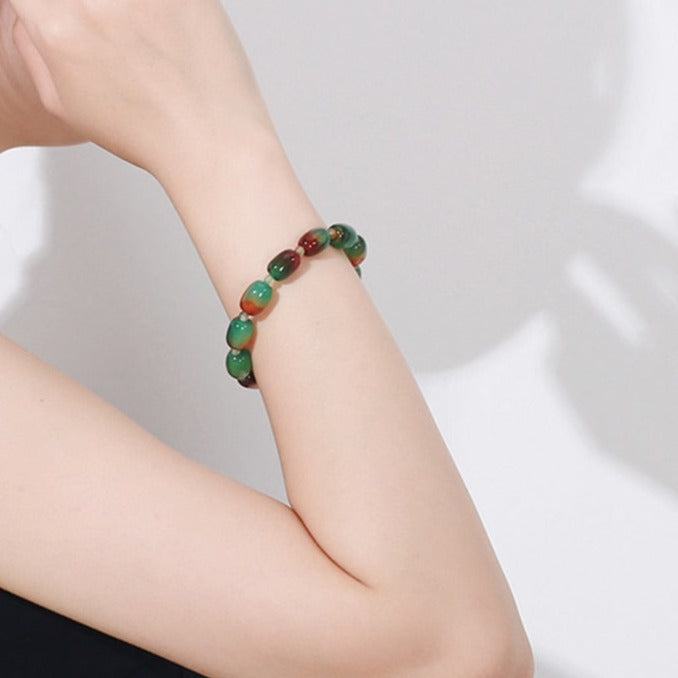Very famous and well-known stone, turquoise is a mineral composed of hydrated copper and aluminum phosphate. The crystalline system of the stone is of the triclinic type, it can have a massive, compact or cryptocrystalline shape. Its density is 2.6 to 2.9 and its hardness is around 5 to 6 on the Mohs scale.
Turquoise is a semi-matte stone with an oily sheen. Its color varies from azure-blue (very popular) to green-blue with sometimes brown or black veins. The color of the stone is sensitive to heat and humidity which can alter it in depth. It is also possible that the blue color of turquoise can tarnish and lose its brilliance, and connoisseurs call them extinct or dead stones.
The most notable deposits of turquoise are found mainly in the desert areas of Iran. It is the country that produces the most beautiful and sought after stones extracted from the mines of Nishapur. The United States, Egypt, Mexico, China, China, India, Tibet ... are also among the countries with the largest turquoise mines.

History of turquoise
Turquoise has a very rich history. The name of the stone dates back to the Middle Ages, at the time of the Crusades, when Europeans discovered it. Present since ancient times among the most ancient civilizations, the oldest mines date back to more than 6000 years before JC at the time of the pharaohs of Egypt. The stone that was sacred was often used to adorn the jewelry and ornaments that archaeologists found on the mummies.
In ancient Persia, turquoise was a very valuable stone, often used as a bargaining chip and bartered for various commodities. Across the globe, more specifically in the Americas, Native Americans of all nations revered turquoise. The Navajo saw it as a piece of heaven fallen to earth, and the Aztecs saw it as an ornament of the gods whose power humans could not bear. Indeed, the funerary treasure of the Aztec ruler Moctezuma included numerous mosaics of exceptional beauty made with this stone, as well as magnificent objects such as the snake carved in a block of turquoise.
Today turquoise is widely used in the jewelry industry, cut into cabochons, beads and other fancy shapes, it is a very popular ornament for a wide variety of jewelry.
Virtue of turquoise
Lithotherapy attributes important physical and psychic virtues to turquoise. On a physical level, the stone is said to have calming benefits for calming pain, regulating and purifying body fluids (blood, urine, hormonal flows ...) and relaxing the nerves. It would also be a good way to remedy flu-like conditions and lung and respiratory diseases. Also recommended for eye problems, turquoise would strengthen vision and reduce the effects of cataracts.
On a psychic level, turquoise is considered a stone that promotes harmony of mind and body. It would be able to absorb disturbances and negative waves that can disturb the body and mind. The stone would promote empathy for others. It is the stone of finesse, softness and friendship. Calming anger and emotional excesses would also favor the senses of listening and communication. Lithotherapists recognize the benefits of turquoise for relieving sudden mood changes, reducing fatigue and both physical and emotional exhaustion.
On a karmic level, turquoise would be a good catalyst for the third eye chakra, so it would be useful for meditation and conducive to the development of intuitions. Its inhibitory action would eliminate psychological and energetic blocks, thus allowing a better circulation of energies in the body. The throat and heart chakras would also benefit from turquoise, which would help overcome obstacles to good communication and feelings of sympathy towards others.
To purify turquoise, it is particularly important to avoid using water or any other cleaning product, which could alter its delicate color. Instead, it would be advisable to use salt for this operation. To recharge the stone, the moon rays would be the most effective and least risky way. Finally, it happens that the turquoise loses its true color and "dies", this means that it has communicated all its power and benefits to you, in this case do not hesitate to return it to the earth.









